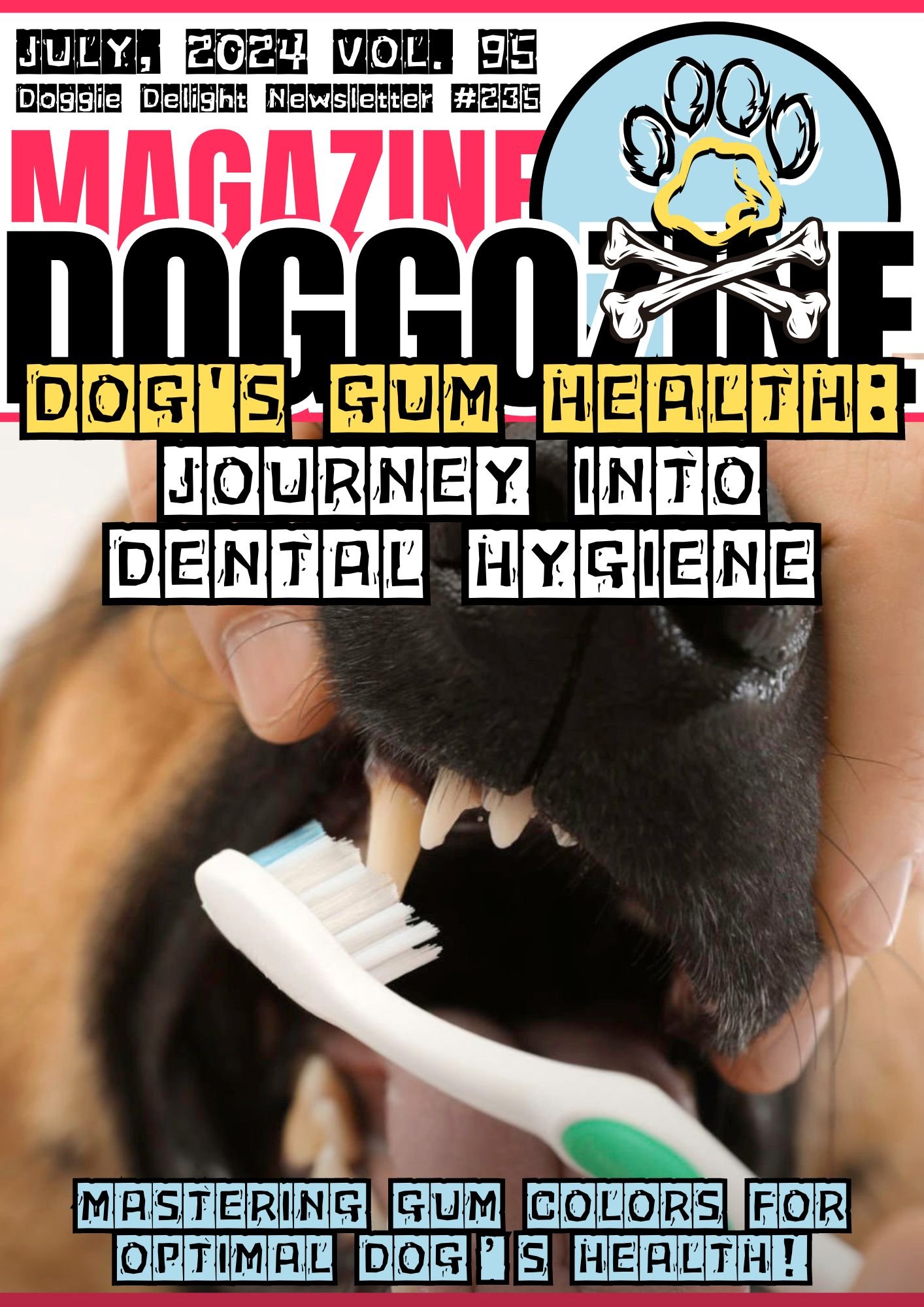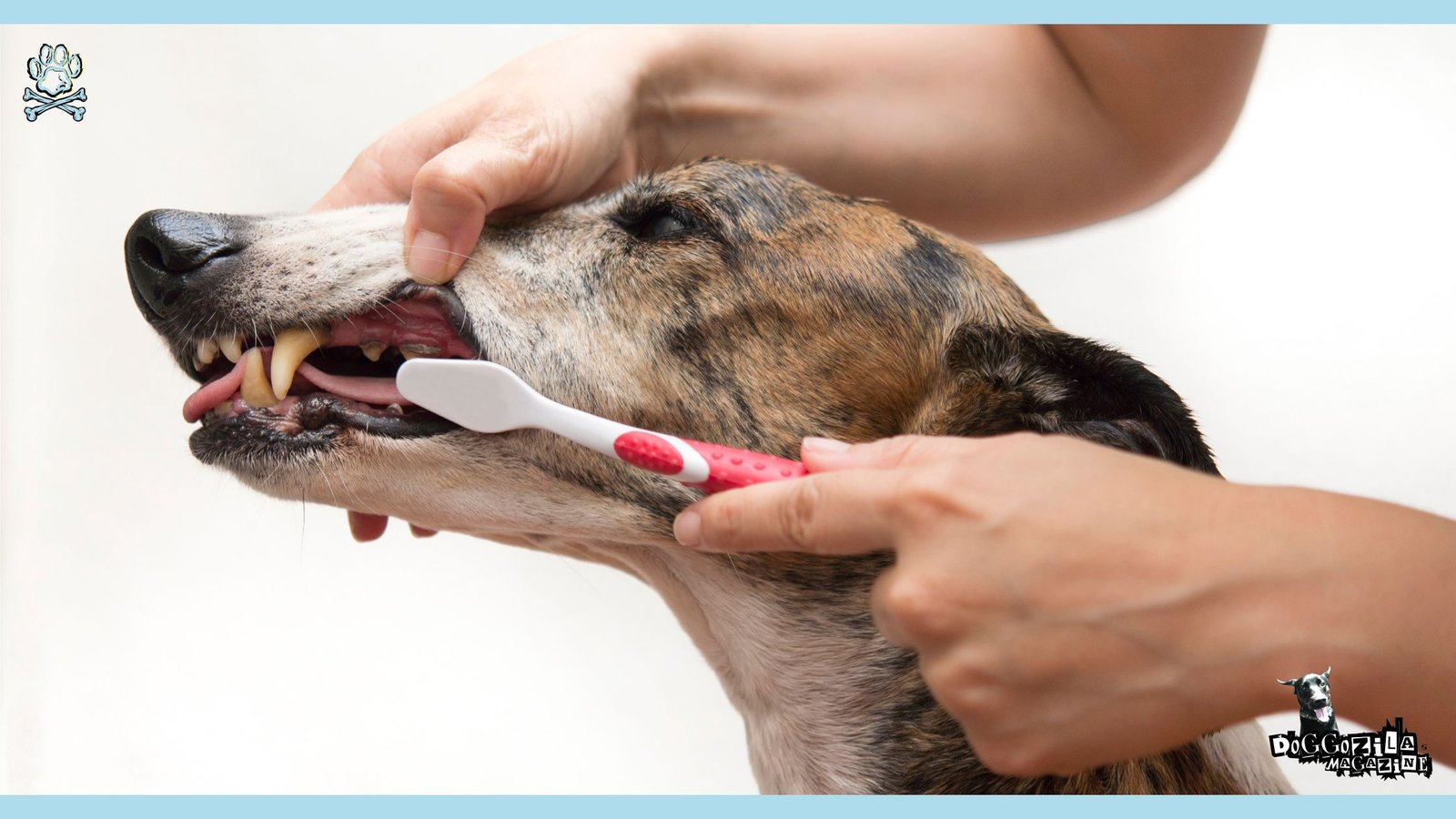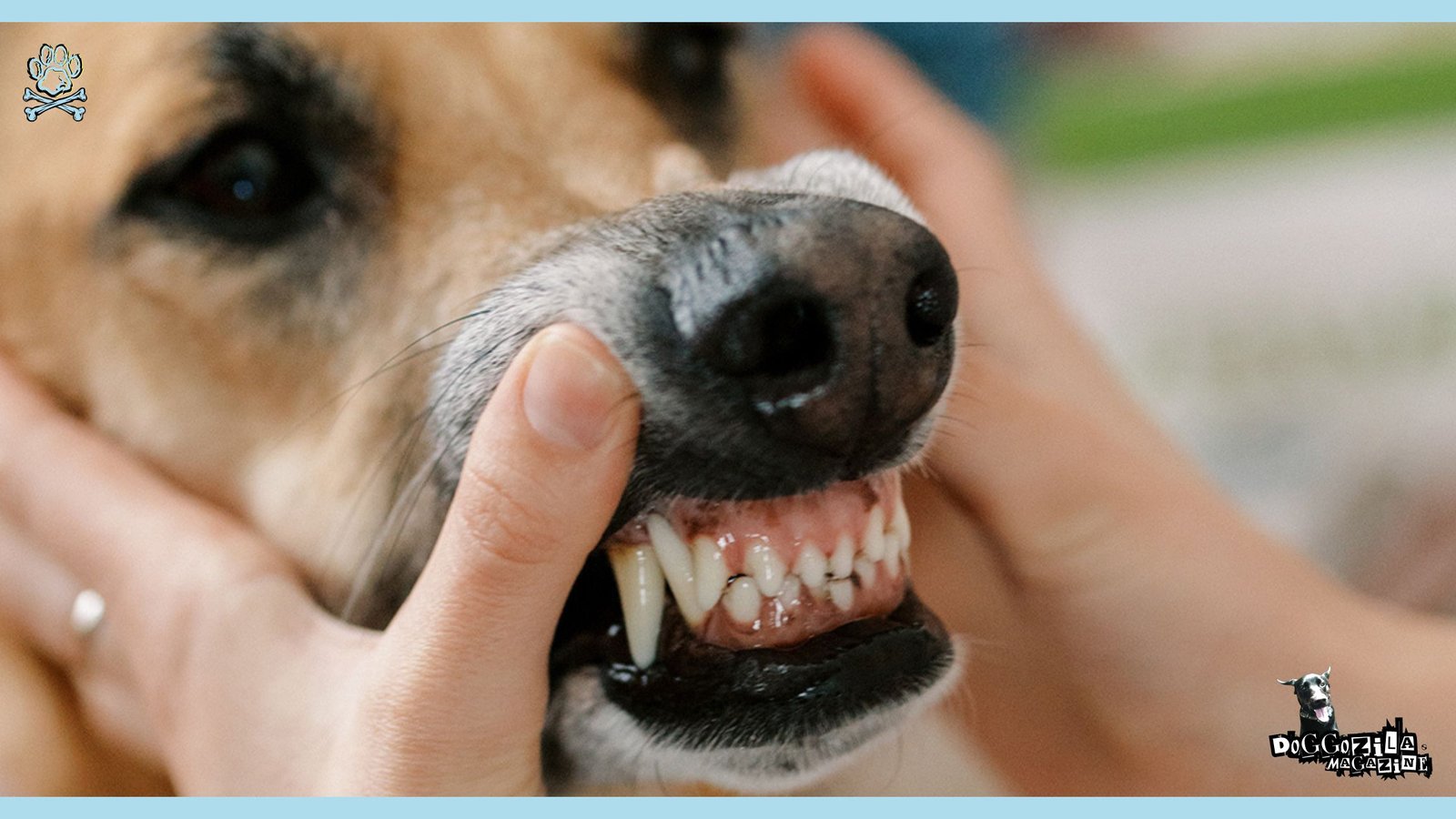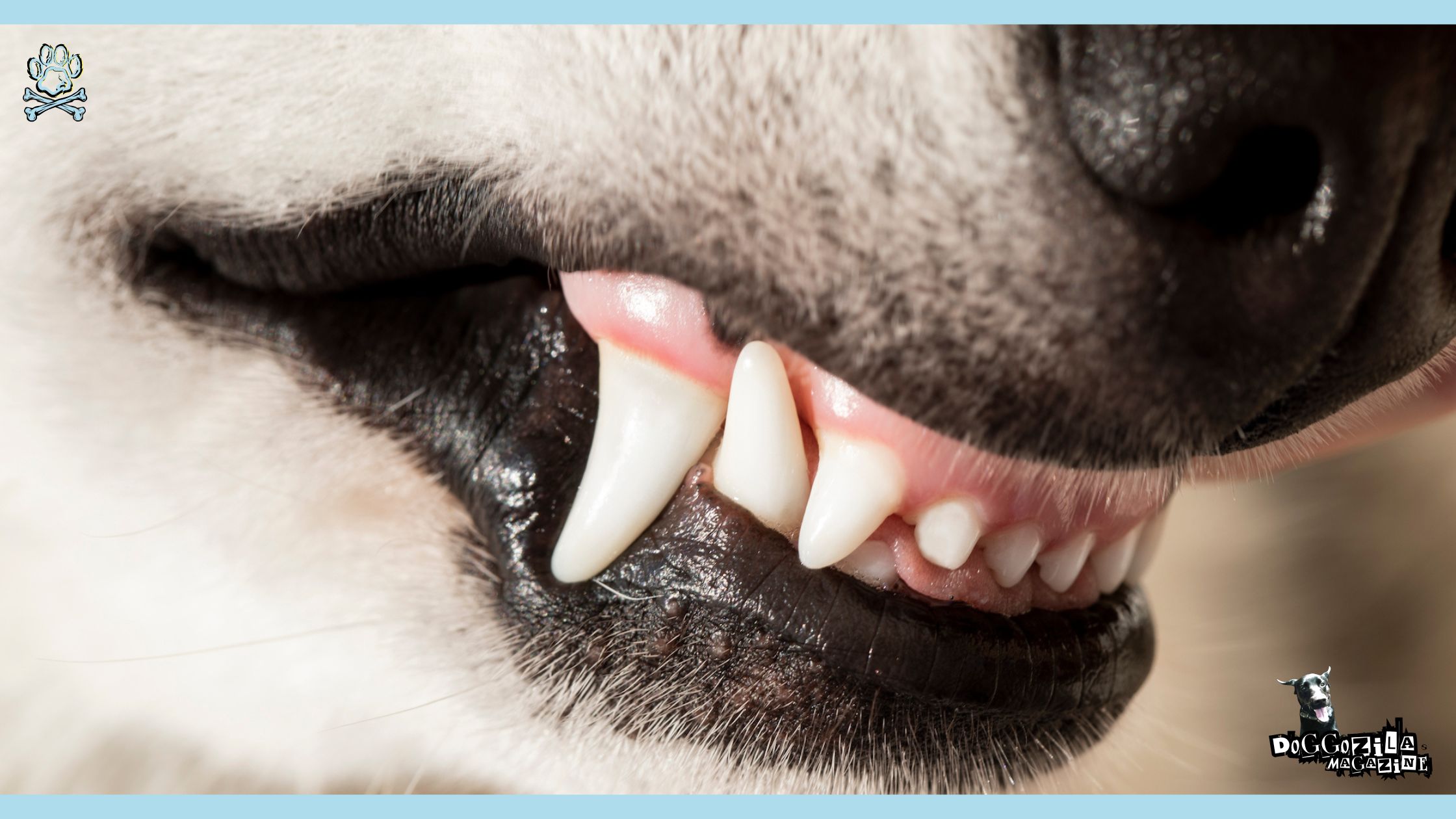
MASTERING GUM COLORS FOR OPTIMAL DOG’S HEALTH!
Are you ready to decode the secret language of your furry friend’s health? Understanding your dog’s well-being through the colors of their gums is a crucial step towards ensuring optimal canine wellness. Just as our gums can reveal underlying health issues, your dog’s gum colors hold the key to detecting potential health problems early on.
How dog’s gum shades can help you prevent potential health issues
In this comprehensive guide, we will master the art of interpreting your dog’s gum colors to navigate their oral health journey with confidence. From the ideal pink hue of healthy gums to the warning signs of redness and the implications of pale, white, or yellow gums, each color tells a story. By recognizing unhealthy gum indicators and implementing effective gum health practices, you can proactively safeguard your dog’s dental hygiene.
Get ready to embark on a journey into your dog’s oral world, where every shade of gum color unveils a chapter in their well-being narrative. Let’s dive in and empower ourselves to be proactive pet parents who prioritize our beloved companions’ health and happiness.
Understanding the Significance of Dog’s Gum Health
Imagine this: you’re playing fetch with your furry best friend when you notice something odd – their gums look a bit off-color. As a dedicated pet parent, you know that your dog’s gum health is a window into their overall well-being. Just like us, our canine companions require proper oral care to maintain a healthy, happy life.
But why exactly are your dog’s gums so important? Think of them as a barometer for their health. Gums play a crucial role in supporting your dog’s teeth, acting as a protective barrier against bacteria and infections. When gums become compromised, it can lead to a host of issues, from bad breath to more severe conditions like periodontal disease.
The Importance of Regular Gum Check-ups
Incorporating a quick gum check into your daily routine is a simple yet effective way to stay on top of your dog’s oral health. By familiarizing yourself with the normal appearance of your dog’s gums, you’ll be better equipped to spot any changes that may signal an underlying issue.
The Impact of Poor Gum Health on Overall Dog’s Health and Well-being
Poor gum health isn’t just about bad breath and unsightly teeth. When left unchecked, oral issues can have far-reaching consequences for your dog’s overall health. Bacteria from infected gums can enter the bloodstream, potentially affecting vital organs like the heart, liver, and kidneys. By prioritizing your dog’s gum health, you’re not only ensuring a sparkly smile but also contributing to their long-term well-being.
🔑 Key Points: Your dog’s gum health is a critical indicator of their overall well-being, and regular check-ups and proper oral care are essential for maintaining a healthy, happy canine companion.

DECIPHERING THE COLOR OF YOUR DOG’S GUMS
As a responsible pet owner, you know that keeping a watchful eye on your dog’s gums is crucial. But what exactly should you be looking for? The answer lies in the color of their gums. A healthy dog’s gums should be a nice, regular pink color – not too pale, not too dark.
Healthy Gum Indicators
Imagine your dog’s gums as a beautiful, healthy pink rose. That’s the color you want to see when you lift their lip for a quick check. Healthy gums should be moist, smooth, and free of any signs of swelling or bleeding. If you press gently on the gum tissue, it should quickly return to its original pink hue within a couple of seconds. This is known as the “capillary refill time” and is a good indicator of proper blood flow.
Unveiling the Spectrum of Gum Colors
While a pretty pink is the goal, not all gum colors are created equal. In fact, variations in gum color can provide valuable insights into your dog’s health status.
Let’s explore the different shades you might encounter:
Pink: The Ideal Hue
A nice, healthy pink is the gold standard for dog gums. This color indicates that your furry friend is receiving adequate oxygen and has good blood circulation. However, it’s important to note that some dogs, particularly those with darker pigmentation, may have black or spotted gums. This is totally normal and doesn’t necessarily indicate a problem.
Red Gums: Warning Signs
If your dog’s gums are looking a bit too rosy, it could be a sign of inflammation or infection. Red, swollen gums can point to gingivitis, a common form of gum disease. You might also notice bad breath or bleeding during brushing. If left untreated, gingivitis can progress to more serious periodontal disease, which can lead to tooth loss and other health complications.
Pale/White Gums and Their Implications
On the other end of the spectrum, pale or white gums can be a cause for concern. This color change often indicates that your dog isn’t getting enough oxygen or is experiencing blood loss. Pale gums can be a sign of anemia, shock, or even internal bleeding. If you notice your dog’s gums looking whiter than usual, it’s important to contact your vet right away.
The Concern of Yellow Gums
Yellow gums are another color to watch out for. This hue can be a red flag for liver issues or jaundice. In some cases, yellow gums may also indicate leptospirosis, a bacterial infection that can affect the liver and kidneys. If you spot a yellowish tinge to your dog’s gums, it’s best to schedule a check-up with your vet to determine the underlying cause.
Unusual Gum Colors: Blue, Black, and More
While less common, you might also come across gums that appear blue, purple, or even black. Blue or purple gums can indicate a lack of oxygen, which can be a sign of respiratory distress or heart problems. Black gums, on the other hand, can be a normal variation in some dogs, particularly those with darker pigmentation. However, if you notice black spots or patches that seem to be growing or changing, it’s worth getting them checked out by a vet.
🔑 Key Points: Familiarizing yourself with the spectrum of dog gum colors – from healthy pink to concerning hues like red, pale, yellow, or blue – is key to monitoring your furry friend’s oral and overall health.

RECOGNIZING UNHEALTHY GUMS BEYOND COLOR
While color is a major indicator of gum health, it’s not the only factor to consider. There are other signs that can point to unhealthy gums, even if the color seems relatively normal.
Other Indicators: Texture and Breath
One thing to watch out for is changes in gum texture. Healthy gums should be smooth and firm, without any signs of swelling or bleeding. If your dog’s gums feel spongy or have a strange texture, it could be a sign of gum disease or other dental issues.
Bad breath is another common indicator of unhealthy gums. While doggy breath is never going to smell like roses, a persistent, strong odor can be a red flag for gum disease, tooth decay, or even digestive issues.
Signs of Gum Disease
Gum disease, also known as periodontal disease, is a common problem in dogs. It starts with a buildup of plaque and tartar on the teeth, which can lead to inflammation and infection of the gums.
As the disease progresses, you may notice symptoms like:
- Red, swollen, or bleeding gums
- Bad breath (halitosis)
- Loose or missing teeth
- Difficulty eating or chewing
- Excessive drooling
- Pus or discharge around the teeth
If you notice any of these signs, it’s important to schedule a dental check-up with your vet. Gum disease can be painful for your dog and can lead to more serious health problems if left untreated.
🔑 Key Points: In addition to color changes, unhealthy gums can be identified through abnormal texture, persistent bad breath, and signs of gum disease like swelling, bleeding, and tooth loss.

THE CRITICAL ROLE OF REGULAR DENTAL CARE
Just like humans, dogs need regular dental care to maintain healthy gums and teeth. Neglecting your dog’s oral hygiene can lead to a host of problems, from gum disease and tooth loss to more serious health issues.
Effective Dog’s Gum Health Maintenance Practices
The good news is that there are simple steps you can take to keep your dog’s gums healthy:
- Brush your dog’s teeth regularly with a dog-specific toothpaste
- Offer dental treats and chews to help remove plaque and tartar
- Feed a balanced diet with crunchy, teeth-cleaning elements
- Schedule regular dental check-ups with your vet
Brushing your dog’s teeth may seem daunting at first, but with a little practice and patience, it can become a bonding experience for you and your furry friend. Start slowly, using a soft-bristled toothbrush and plenty of praise and rewards. Aim to brush at least a few times a week, if not daily.
The Importance of Proper Nutrition
In addition to brushing, proper nutrition plays a key role in maintaining healthy gums. Look for dog foods that are specifically formulated for dental health, with ingredients that help reduce plaque and tartar buildup. Crunchy kibble can also help scrape away debris from the teeth as your dog chews.
Avoid feeding your dog table scraps or sugary treats, which can contribute to tooth decay and gum disease. Instead, opt for dental chews and treats that are designed to clean the teeth and freshen breath. These treats often contain natural ingredients like parsley, mint, and chlorophyll, which have awesome benefits for your dog’s oral health.
🔑 Key Points: Regular dental care, including brushing, dental treats, and proper nutrition, is essential for maintaining your dog’s gum health and preventing serious oral and overall health issues.

NAVIGATING COMMON GUM-RELATED ISSUES
Even with the best dental care, dogs can still experience gum-related issues. It’s important to be aware of these common problems so you can catch them early and seek appropriate treatment.
Gum Disease: A Prevalent Threat
Gum disease, or periodontal disease, is one of the most common health problems in dogs. It occurs when plaque and tartar build up on the teeth and gums, leading to inflammation, infection, and eventual tooth loss.
The early stages of gum disease, known as gingivitis, can often be reversed with thorough dental cleanings and improved at-home care. However, if left untreated, gingivitis can progress to periodontitis, a more severe form of gum disease that can cause permanent damage to the teeth, gums, and even the jawbone.
Signs of gum disease include:
- Red, swollen, or bleeding gums
- Bad breath
- Loose or missing teeth
- Difficulty eating or chewing
- Excessive drooling
If you notice any of these symptoms, schedule a check-up with your vet right away.
Addressing Dental Emergencies and Dog’s Gum Health
In some cases, gum issues can become dental emergencies that require immediate veterinary care.
Examples of dental emergencies include:
- Fractured or broken teeth
- Severe mouth pain or bleeding
- Trauma to the mouth or jaw
- Difficulty breathing or swallowing
If your dog experiences any of these issues, don’t hesitate to contact your vet or an emergency animal hospital. Prompt treatment can help alleviate pain, prevent infection, and potentially save your dog’s teeth and gums.
In some cases, dental emergencies may require tooth extractions or other surgical procedures. While this can be scary for both you and your dog, it’s important to follow your vet’s recommendations and provide proper aftercare to ensure a smooth recovery.
🔑 Key Points: Being aware of common gum-related issues like gum disease and dental emergencies can help you catch problems early, seek appropriate treatment, and maintain your dog’s oral health.

FAQS: EVERYTHING YOU NEED TO KNOW ABOUT YOUR DOG’S GUM HEALTH
How to Conduct a Proper Gum Health Check
To check your dog’s gums, gently lift their upper lip and examine the gum tissue around the teeth. Healthy gums should be pink, moist, and smooth, with no signs of redness, swelling, or bleeding.
You can also press gently on the gums with your finger – the tissue should briefly turn white and then quickly return to pink, indicating good blood flow. Try to make gum checks a regular part of your dog’s grooming routine, so you can catch any changes or abnormalities early on.
The Link Between Gum Color and Overall Dog’s Health
Your dog’s gum color can provide valuable insights into their overall health and well-being. Gums play a vital role in reflecting blood flow, oxygenation, and the function of organs like the heart, liver, and kidneys.
Pink gums generally indicate good health, while pale or white gums can be a sign of anemia, shock, or blood loss. Red or inflamed gums may point to infection or gum disease, while yellow gums can suggest liver problems or jaundice. Blue or purple gums can indicate a lack of oxygen and may be a sign of respiratory distress or heart issues.
By monitoring your dog’s gum color and seeking veterinary care when needed, you can help catch underlying health problems early and ensure your furry friend stays happy and healthy.
When to Seek Professional Vet Care
If you notice any changes in your dog’s gum color, texture, or overall oral health, it’s important to seek professional veterinary care.
Some signs that it’s time to schedule a check-up include:
- Persistent bad breath
- Red, swollen, or bleeding gums
- Loose or missing teeth
- Difficulty eating or chewing
- Excessive drooling or pawing at the mouth
- Lumps or bumps in the mouth
Your vet can perform a thorough oral examination, clean your dog’s teeth, and recommend any necessary treatments or follow-up care to keep your dog’s gums and teeth healthy.
🔑 Key Points: Regular gum health checks, understanding the link between gum color and overall health, and knowing when to seek professional vet care are key to maintaining your dog’s oral and overall well-being.

ENSURING THE LONG-TERM ORAL HEALTH OF YOUR DOG
Maintaining your dog’s oral health is a lifelong commitment, but the rewards – a happy, healthy pup with a sparkling smile – are well worth the effort.
Integrating Preventative Measures into Daily Routine
The key to long-term gum health is integrating preventative measures into your daily routine.
This includes:
- Brushing your dog’s teeth regularly with a dog-specific toothpaste
- Offering dental chews and treats to help remove plaque and tartar
- Feeding a balanced diet with teeth-cleaning elements
- Scheduling regular dental check-ups and cleanings with your vet
Make oral care a positive experience for your dog by using plenty of praise, rewards, and patience. Start slowly and gradually increase the duration and frequency of brushing sessions. Experiment with different flavors of toothpaste and dental chews to find what your dog likes best.
Remember, consistency is key when it comes to maintaining healthy gums. By making oral care a daily habit, you can help prevent gum disease, tooth loss, and other serious health problems down the line.
The Power of Regular Vet Check-ups
Even with the best at-home care, regular veterinary check-ups are essential for maintaining your dog’s oral health. Your vet can perform thorough dental exams, clean your dog’s teeth, and catch any potential problems early on. During a dental exam, your vet will look for signs of gum disease, tooth decay, oral tumors, and other issues.
They may also recommend x-rays to check for problems below the gum line, like abscesses or damaged tooth roots. Aim to schedule a dental check-up for your dog at least once a year, or more frequently if your vet recommends it based on your dog’s individual needs.
🔑 Key Points: Integrating preventative measures like daily brushing and regular vet check-ups into your routine is key to ensuring the long-term oral health and overall well-being of your furry best friend.
Wrap-Up: The Path to a Healthier Dog Begins with Gum Care
As a dedicated dog owner, you want nothing more than to see your furry friend thrive. By prioritizing your dog’s gum health, you’re taking a crucial step towards ensuring their overall well-being and quality of life. Remember, your dog’s gums are a window into their health, reflecting everything from blood flow and oxygenation to the function of vital organs. By monitoring gum color, texture, and overall oral health, you can catch potential problems early and seek appropriate care.
Integrating regular brushing, dental treats, and vet check-ups into your routine may take a bit of effort, but the rewards – a happy, healthy pup with a tail-wagging smile – are immeasurable. So, roll up your sleeves, grab that toothbrush, and embark on the path to a healthier dog, one sparkling gum line at a time. Your furry best friend will thank you for it!
Brief Summary on Dog’s Gum Health
In wrapping up, it’s crucial to recognize that your furry friend’s gum health speaks volumes about their overall well-being. By mastering the art of deciphering gum colors, you hold the key to ensuring optimal oral health for your canine companion. Remember, the ideal pink hue signifies good health, while deviations like redness or paleness may signal potential issues that require attention.
Through regular dental care, including brushing, providing dental treats, and maintaining a balanced diet, you can safeguard your dog’s gum health and prevent common issues like gum disease and bad breath. By staying proactive and vigilant in monitoring your dog’s gum colors and overall oral health, you pave the way for a healthier, happier life for your beloved pet.
Thank you for embarking on this journey of caring for your dog’s well-being – their wagging tails and joyful barks are a testament to your dedication as a hands-on dog owner.

Happy tails, and here’s to many more years of shared adventures and wagging gums!









